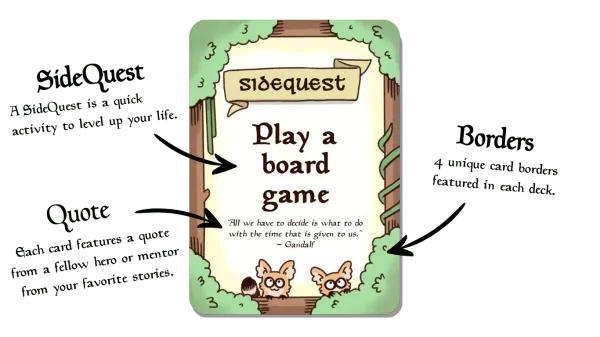№ 71 | Queueing Strategies, “Thought-Terminating Clichés,” Exquisite Conversation Cards, Inspired Check-Ins Card Deck, A Framework for Hybrid Organizations, and Priya Parker on Room Density

Queueing strategies
Thanks to this interactive study of queueing strategies from Sam Rose, I now understand the programming concept of queueing. The post uses a series of highly interactive visuals and micro-challenges that demystify why HTTP requests sometimes fail—and different queuing strategies to help prevent these failures. This is a fabulous example of an explorable explanation.

“Thought-terminating clichés”
Labels, especially for previously unnamed concepts, are a profound thing to think with. Why? We’re suddenly able to see/spot something, simply by nature of that thing now having an a name (I’ve heard this described as The Joshua Tree Effect),
Here’s a new-to-me concept that—now named—has been rattling in my head: The “thought-terminating cliché.” These are catchphrases that effectively shut down critical thinking and dialogue about a complex topic. Think of zingers like: “It is what it is,” “Boys will be boys,” “Everything happens for a reason,” and “Don’t overthink it.”

Exquisite Conversation Cards, c. 1830-1850
Here’s a card deck—from the mid-1800s! Exquisite Conversation Cards (1830-1850) are more of a game than a ‘thing to think with’, but… I’m kind of enjoying discovering historic uses of the card format for things other than playing cards and tarot decks.
Conversation cards, usually made for adult partygoers, consist of question and answer cards. Couples choose cards; one reads a random question card, the other a random answer card. The answer, when read, could start conversations or produce laughter at the nonsensical response. This set was made by Fisher and Brother in the mid-1800s.

Okay. These exquisite conversation cards don’t count very well as a ‘playful thing to think with’, so here’s a new card deck—also a conversation starter—that Douglas Ferguson recently shared with me:
Inspired Check-Ins Card Deck
Want to level up your 1:1 conversations? Check out the Inspired Check-Ins card deck.
The Inspired Check-Ins card deck is designed to help managers have more meaningful, productive and empowering one-on-one touch points with their employees.
The deck includes “recommended agendas… 90+ questions… and tips on how to navigate those conversations well.”

A framework for hybrid organizations
Way back in issue 51, I shared this provocation (and blog post) from Emily Webber:
How can we replicate office-based sharing while distributed?
Following a recent keynote talk at Agile Manchester, Emily is back with a longer post and a framework for thinking about team memory, joining up, and serendipity in hybrid organizations. Lots of solid concepts, printable PDFs, and plenty of good (implicit) ‘how might we’ challenges.

On the topic of gathering people together…
Priya Parker on Room Density
Okay. This is more about “spaces to think within,” than “things to think with,” but… it feels highly relevant? Within this short post from Priya Parker on ways hack your room setup to create more connection, is this little gem/tip about drawing a perimeter:
My friend, Aimee, was invited to a birthday party in the park. When she arrived at the spot where she’d been told to meet, it took her a while to realize that this was the group. It didn’t feel like a party – there were just clusters of people standing around making awkward conversation. She pulled out a big picnic blanket, spread it on the ground, and invited everyone to kick off their shoes and join her. It was like she’d flipped a switch – suddenly, the picnic blanket was the party. The park was a boundaryless space, but the picnic blanket created a border that allowed for density to be created.
When your space doesn’t naturally allow for density, create it by making a perimeter.
***Bonus 1: I love the story behind this ‘signature’ quilt:

***BONUS 2: Poly Mono is a “game font” made of shapes that creates Karel Martens-inspired prints.






